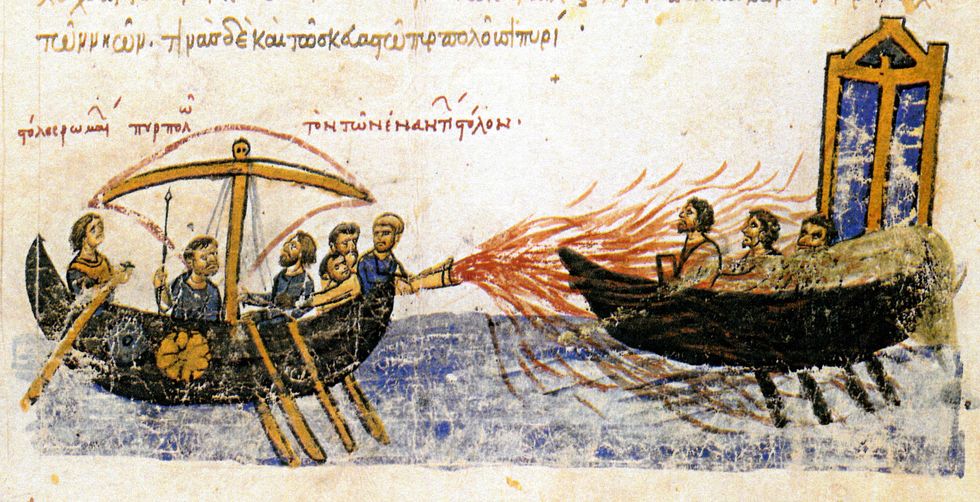A mystery surrounds a weapon of destruction used in medieval warfare, including its ingredients – but one thing we do know is that it was truly terrifying.
Known as Greek Fire, this ancient incendiary chemical composition – or compositions – was used by the Byzantine Empire starting in the 7th Century CE, who considered themselves Romans.
The name of the substance — or substances — is confusing, but it is believed that the Greek Fire term came about after its creation.
It was something to be feared by enemies of the Byzantine Empire. Its recipe was a state secret but modern scholars have theorised it was based on petroleum mixed with resins, which would make it an ancient equivalent of napalm.
Science writer Dr. Katie Spalding wrote for IFLScience.com that most modern scholars suspect the weapon was based on either ‘crude or refined type of petroleum’ such as naphtha. Suggestions have also include, ‘resins, pine tar, animal fat, pitch, sulphur, lime, bitumen’.

Byzantine sailors would throw grenades loaded with chemical mixture onto the ships operated by their enemies, or they would spray the material from tubes.
Greek Fire’s ability to burn on water made it an effective weapon. Still, incendiary and flaming weapons had been utilised for warfare centuries before Greek fire was invented. Alex Roland, Professor Emeritus of History at Duke University, said in a 1992 research paper: “The characteristics of Greek fire, as it is represented in the literature in the period from 678 to 1204, may be reduced to four.
“First, it burned in water; some even reported that it was ignited by water, but this is not generally accepted.”
“Second, Greek fire was always portrayed as a liquid,” he continues.
“Third, at least when used at sea.”
He adds: “It was always shot from tubes or siphons located in the bows of specially designed fire ships.”
“Finally, many firsthand accounts of its use report the appearance of smoke and a loud discharge or booming noise when the flaming liquid left the tube or siphon,” he writes. “This characteristic was to become especially important in the historical controversy over the composition of Greek fire.”
But the mystery surrounding what Greek Fire actually was remains, as Roland said: “There is no undisputed primary evidence to help pin down just what Greek fire was.”
Perhaps it’s for the best…
How to join the indy100’s free WhatsApp channel
Sign up for our free Indy100 weekly newsletter
Have your say in our news democracy. Click the upvote icon at the top of the page to help raise this article through the indy100 rankings.







